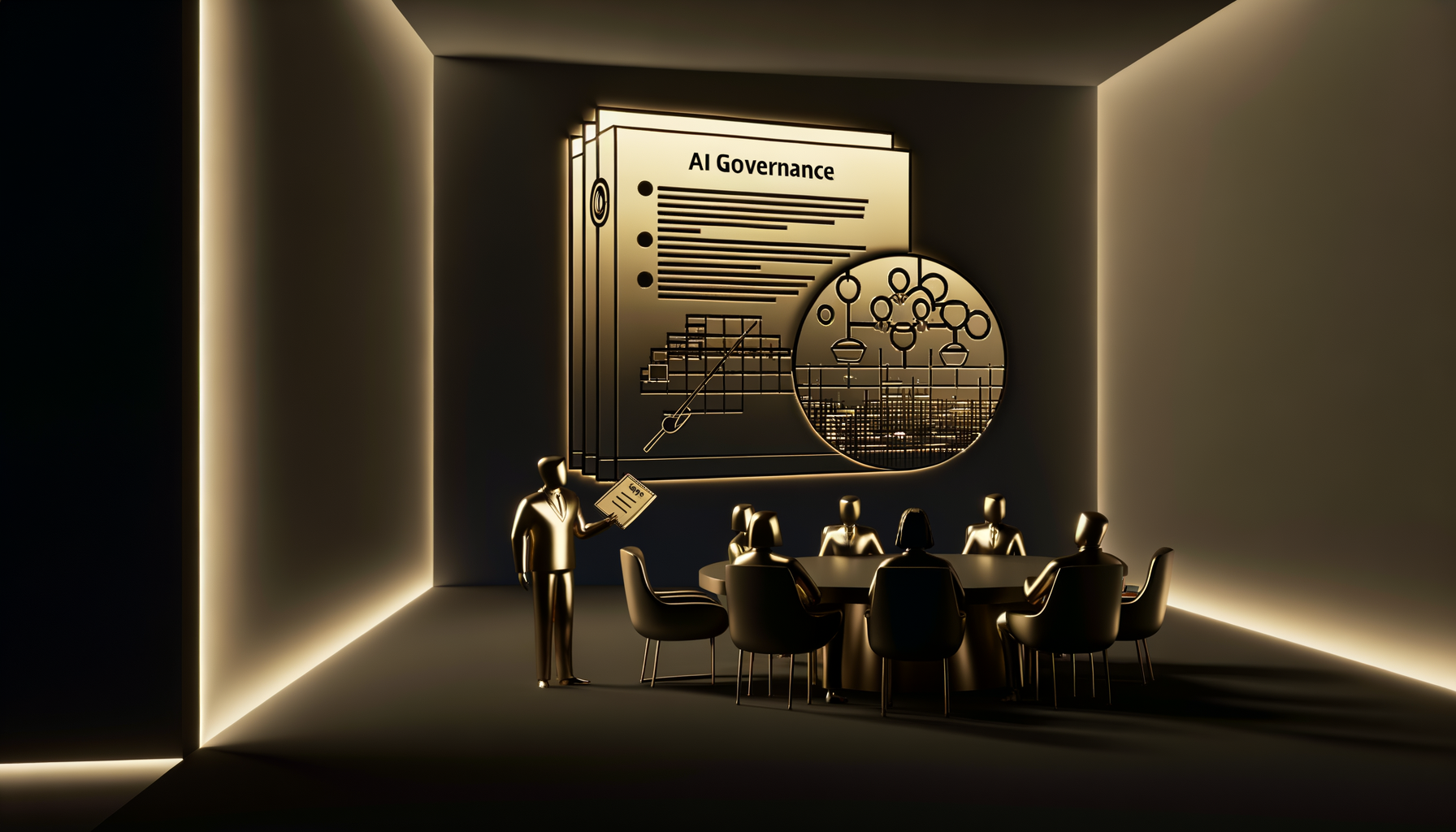AI ethics panels have churned out lofty principles for years—but are these guidelines actually protecting us, or are they just corporate wallpaper? The real game is shifting: actionable accountability, not PR spin, is the next reckoning.
The AI Ethics Principle Paradox: Virtue Signaling or Real Guardrails?
AI principles have blanketed the tech world—transparency, fairness, non-discrimination, privacy, human oversight. Every major actor, from Google to the OECD, flashes their own set. Yet, beneath this ethical blizzard lurks an awkward truth: most principles are unenforceable. Too abstract to be actionable, with no strings attached, they’re aspirational at best, loopholes at worst.
The gap between saying “be fair and transparent” and making those ethics real is not just rhetorical. It’s the governance gap. And it is now the central challenge for organizations, regulators, and AI practitioners worldwide.
The Decisive Inflection Point: From Principles to Action
The work from UNESCO’s 2025 AI Ethics Toolkit and headline events like the Global Conference on AI Ethics signal this paradigm shift. There is growing consensus: AI’s existential risks—amplified bias, black-box systems, cybersecurity threats—aren’t solved with mission statements. They demand governance frameworks with teeth.
- Transparency: Not just a value, but a requirement—auditable code, traceable decisions, documentation that regulators can scrutinize.
- Bias: More than a promise to avoid it. Organizations are now being pushed to proactively detect, measure, and report bias—sometimes under threat of legal sanction.
- Security: Internal checklists won’t cut it. AI systems must pass rigorous, externally validated security and privacy tests before—and after—deployment.
Those who say, “The AI did it,” are missing the point. In a world of true governance, humans—not machines—are always accountable.
The Birth of Enforceable Accountability: What’s Actually Happening?
What legitimizes the claim that “enforceable accountability” is ascendant? Look at the convergence of initiatives outpacing the traditional ethics codes:
- UNESCO’s 2025 Toolkit maps principles onto regulatory templates and practical sector-specific controls, nudging states towards harmonized enforcement.
- EU’s AI Act moves beyond soft law. It makes transparency obligations, risk-assessments, and documentation legally binding—with non-compliance fines exceeding 6% of annual turnover.
- Global benchmarks (OECD, ISO, NIST) are spawning frameworks for external audits, incident reporting, and mandatory impact assessments—embedding accountability into standard operating procedures.
This isn’t just procedural. It’s a structural transformation: accountability shifts from suggestions to mandates, from voluntary to obligatory. Failure to comply won’t just risk headlines or reputation; it could mean product bans, litigation, and regulatory sanction.
Why Principles Aren’t Enough
- Principles lack specificity: Without granular criteria, teams default to interpretation and circumvention.
- No enforcement mechanism: Try “self-policing” on Wall Street. Without teeth, principles become box-ticking exercises, not guardrails.
- Global misalignment: Patchwork ethics codes splinter trust, enable regulatory arbitrage, and erode public confidence.
Enforceable governance brings clarity: whose duty is what, who signs off, what gets measured, how it gets reported, what triggers penalties. It translates vision into processes, responsibilities, and consequences.
From Platitudes to Protocols—The Technical Governance Gap
Implementing governance at scale is no easy feat. The road to accountability is paved with technical obstacles and operational complexity. Unlike legal compliance, AI governance requires integrating controls within the codebase—and across the lifecycle. Consider:
- How will teams document and version training datasets?
- What audits will detect and flag emergent bias before live deployment?
- Who signs off on explainability, and what counts as “sufficient” explanation?
- How is third-party risk managed with open-source or foundation models?
The answers demand more than policies—they require technical protocols, audit logs, supervised deployments, and clear assignation of responsibility for every key decision. Results must be subject to routine review, external audit, and legal redress. This is what true accountability looks like in the AI era.
Human Responsibility in an Automated World
One of the most critical dimensions—often lost in boardroom discussions—is the necessity of human accountability. Assigning real names, sign-offs, and personal liability to algorithmic decisions is the only sure route to meaningful governance. It is not enough to say “the system failed”—someone must own both the outcome and the provenance of the system itself.
Regimes like the EU’s AI Act are explicit: organizations must name responsible officers, ensure traceability of decisions, and maintain a documented “line of accountability” from system design through to real-world impact. This is a seismic change: the locus of accountability doesn’t migrate into the black box. It stays with people, processes—and enforceable documentation.
The Challenges of Operationalizing Accountability
There are significant barriers to moving from principle to action:
- Cultural resistance: Many organizations treat ethics as PR, not policy. Changing mindsets and incentives is non-trivial.
- Technical scalability: End-to-end monitoring, traceability, and documentation are costly and slow, especially for complex or dynamic AI systems.
- Jurisdictional mismatch: Cross-border AI development strains efforts at harmonized governance; global companies face a minefield of overlapping and contradictory mandates.
The Upside: Why It’s Worth the Pain
The move to enforceable accountability will save organizations from regulatory whiplash and existential risk. It also has pragmatic upsides:
- Higher trust and adoption—users and buyers can inspect evidence, not just take comfort in spin.
- Clear boundaries and responsibilities—reducing ambiguity, diffusion of blame, and litigation risk.
- Operational resilience: Routine audits and incident reporting surface vulnerabilities before they metastasize.
The new bar for “responsible AI” is not how eloquently you talk about ethics, but how provably you embed and enforce them every day.
The Road Ahead: Predicting the Next Decade
Prediction 1: “Ethics-washing” will become a liability. Regulators are increasingly demanding evidence, not intentions. Organizations that can’t “show their work” will lose market access, face fines, or be publicly exposed.
Prediction 2: Auditability becomes table stakes. External audits (akin to financial audits today) for major AI systems will become routine. Leaders will invest in robust audit trails, real-time incident response, and systematic bias and security reporting.
Prediction 3: Personal liability for leadership. The days are numbered where executives can claim ignorance or plausible deniability about how their systems behave. Legal frameworks are already moving toward making officers personally accountable for compliance failures.
Prediction 4: Sector-specific controls. Healthcare, finance, defense—each will spin up tailored governance regimes, far beyond generic “best practice” checklists. These will be driven by risk profiles and the severity of plausible harms.
What Should Organizations Be Doing Now?
Any practical path to enforceable AI accountability starts here:
- Map the gap: Inventory assumptions, risks, and governance pain points in your current AI systems.
- Assign responsibility: Designate named officers and teams. Make accountability visible and traceable.
- Embed controls: Implement technical protocols for dataset curation, bias detection, explainability, and security—codified in operational processes, not just paper policies.
- Build for audit: Document every key process, decision, and handoff. Prepare for external scrutiny before you’re asked.
- Engage with evolving standards: Follow the outputs of UNESCO, the EU AI Act, and global bodies—align policies to where the regulatory puck is going, not where it is today.
Conclusion: Human Accountability, or Bust
AI has left the lab, and principles for their own sake aren’t keeping us safe, fair, or free. The governance gap is closing not with another round of workshops, but with hard-edged frameworks, unmistakable responsibility, and real-world consequences for missing the mark. In this new era, AI leaders will be defined not by what they claim to value, but by what they make enforceable—and provable—at scale.
The only defensible AI ethics today is enforceable AI ethics—if you can’t prove it, audit it, and hold someone accountable, it isn’t real.





